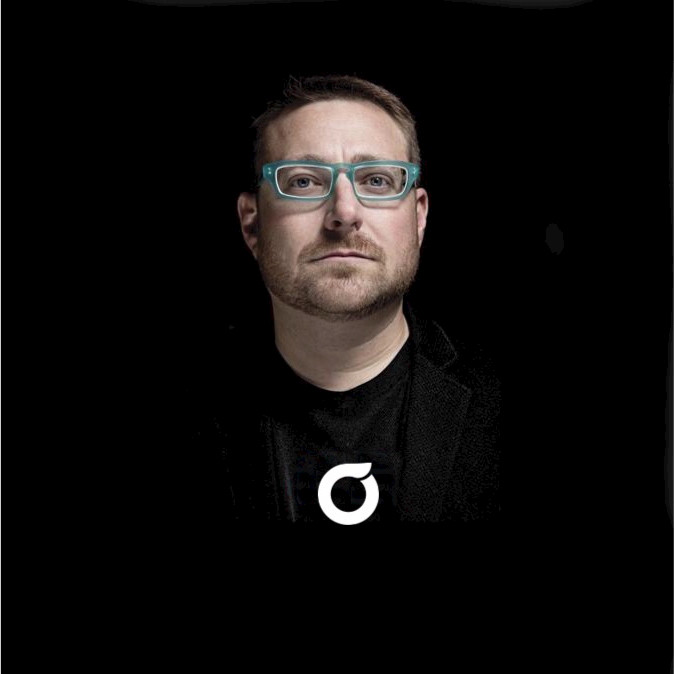Perdoo is a strategy execution tool.
Let that sink in for a moment.
Very few teams out there can clearly state what their strategy is. Everyone has a different opinion and there’s not a lot of alignment.
Then, how do you translate a strategy into an execution plan?
The nuts and bolts of alignment
Henrik Jan van der Pol started his career as a management consultant. The decision to start Perdoo came after lots and lots of strategy discussions with clients.
Henrik says strategy is at the heart of alignment. You need to have strategic pillars in place.
Next is OKRs (Objectives and Key Results). These are the destinations on your path. They help you know if you’ve reached the end or not.
Then, there’s KPIs (Key Performance Indicators). These are like your dashboard in your car. No matter how great your plan is, if you run out of gas or battery, you aren’t going to make it to the end.
Making strategy available to everyone
Henrik says a big problem is that OKRs are often misunderstood. Digital leaders know they should implement them, but it’s not easy to take very academic terms and translate them into actions.
Another struggle leaders face is that they imbibe the idea of OKRs deeply, but the teams who will execute the work don’t have the same level of understanding. “What’s really important about a strategy execution tool is that you bring the leadership level of the organization together with the execution side of the business, all the different people and teams.”
Most people don’t see the natural connection between their projects and tasks and the bigger strategy. Henrik says the secret is to get everyone to “understand the relationship between the projects and tasks that they are working on every day and every week, and how that serves the longer term goals of the organization and how that fits within the strategy of the organization.”
Do you need an app?
Software can help teams get aligned, but it doesn’t always need to be very fancy. Sometimes you just need a great spreadsheet to help you out.
But something external is important. In the early days, most teams rely on the founders for strategy alignment. Eventually, you must grow to the place where the strategy doesn’t come from one voice, but everyone understands it well enough to make good decisions.
Links
Check out the new Goal Diggers podcast from Perdoo
Welcome back to The Digital Workplace podcast. Today, our guest is Henrik van der Pol. He is the founder and CEO of Perdoo. Hi, Henrik. How are you today?
I’m fine. Thank you. Thank you for having us, having me on the podcast today.
Yes, you and representing your whole company, too. It’s great to have you here. I’m excited to talk to you. Your product is cool. The topic is cool. So we’re going to get into into that. But first, let’s start with our CAPTCHA question, prove your humanity for us here. I’m going to ask you this question. What is the best reward someone can give you?
Well, I guess a computer can come up with this as well. But I would say that that’s a compliment. For anything that you do, I think we’re getting an honest and meaningful compliment from someone is the best thing, best reward I can get for my work.
Nice. I like that. Hopefully, we’ll get to the end and I’ll be able to give you that compliment based on what you guys have built at Perdoo. So tell us a little bit about Perdoo. How did it get started? What does it do?
Perdoo is actually a strategy execution tool. So I used to work as a management consultant being responsible for implementing strategic projects in organizations. And there I learned firsthand that designing a strategy for a company is a lot of fun. But that’s also the easy part, and it gets a million times harder when you’re actually responsible for communicating, implementing, and executing that strategy. So that’s a problem that we wanted to solve with Perdoo. We started off as an OKR tool. And then over time, we built more and more features into the product that actually has grown Perdoo today into a tool that organizations can use to do exactly that, communicate, implement, and execute strategy.
So give me an example of a feature that you’ve added that changes that just from OKR tool to strategy execution.
The first thing that we did is we added KPIs into the mix. When you look at a company strategy, OKRs are a great type of tool to explore new things, to make improvements inside your organization, but KPIs are equally important. The way we explain those differences between KPIs and OKRs always is that if your organization will be a car, you’re driving your car towards the destination, then your OKRs are helping you build out your roadmap towards that point. But as you’re driving down that path, you also need to keep an eye on your car’s dashboard to make sure, for example, you don’t run out of gas and the engine doesn’t overheat. And the things that you’ll find on a car’s dashboard, these are things that you constantly need to watch, doesn’t really matter where you are on your journey. And therefore, they translate better to KPIs, KPIs being a tool to measure the effectiveness and the success of your business as usual. And then more recently, we added strategic pillars into the mix. So strategic pillars really help you set up your strategy on the product platform. And then you can align your KPIs and your OKRs to that strategy. And that really fosters strategic alignment. Now all of a sudden, you have a place where strategy and execution really come together.
Yeah. And I love the imagery of driving the car, the OKRs tell you what the milestones are, the next town you need to get to to get to your final destination. How would you explain strategy within that same metaphor?
Oh, that’d be hard. That is a really hard question. Because strategy is really about competition and about differentiators. So everyone is competing today, and every organization is facing limited resources. And therefore it’s really important how you’re going to deploy these resources, and how are you going to differentiate yourself in the market that you’re in. So that, I think, is what strategic pillars in Perdoo are all about so that everybody in the organization understands what are the differentiators that you have that you continuously want to invest in that you believe are important now, but will also be important 10 years into the future.
And that’s different, of course, from, there’s a difference between strategy, what’s your strategy, and what’s strategic. So you could have a long term goal, and you could call that a strategic goal, just because it has a very long horizon. But that doesn’t automatically mean that that will be your strategy, right? That’s just still part of your roadmap. And I think that’s something that’s confusing for a lot of people. They say, if something is very far ahead on my roadmap, for us, that would still be an OKR. But they might call it strategic, but that doesn’t mean it’s strategy. When we define strategy, we really stick to, for everything that we do, really, we try to stick to the common terms in the academic world. So Michael E. Porter, Roger Martin, these are all people that we read the books from and then use their terminologies that they have.
I feel like this is one of the core challenges of strategy alignment, OKRs goal setting is just that there are these academic answers out there, but for the common person who just signs up to use your products saying, I need some better alignment, I need something, you have to actually go in and almost educate them on these terms. I feel like it’s not so much common sense or there’s something about it that doesn’t really resonate with us to understand the differences between all these things. Do you find the same thing?
Yeah, absolutely. And I think that’s an important problem or a big value add of working with a tool like Perdoo because that will prevent you from having to invent that all yourself. And so hopefully, from using the Perdoo product, you don’t feel that you need to get into all these topics. We do that ourselves and we share our knowledge with the world. We have a resources help. I’ve written a few ebooks. We all publish that for free. And if people really want to get into these topics, they’re more than welcome to. What the Perdoo product should do for organizations is help translate that theory into a tool that you can actually easily use for your entire organization.
And because even if there are people inside an organization that are getting into these topics and they are excited about it, it’s often management level or leadership level. But I think what’s really important about a strategy execution tool is that you bring the leadership level of the organization together with the execution side of the business, all the different people and teams. And for that reason, you need to have something that’s simple, easy to use, and build it in such a way that it doesn’t require people to read books about it to understand what they’re doing.
Yeah, and this is, I feel like, the same struggle a lot of people have is that, like you said, it’s one thing to come up with a strategy that’s fun, it can be exciting, and you can do that. But the execution side is much different. And even within a company itself, like you said, for maybe a senior level leader who’s developing the strategy, needs to understand these terms in some depth, but then also needs to communicate it, I think a lot of times they forget that stuff or it just becomes too difficult. And they just say, hey, this is what you got to do, work on this project. But then you’re dealing with misalignment, you’re dealing with people who don’t understand the full picture. Is a tool the answer? Is software the answer? Just looking, speaking as a business owner, when you’re trying to get people throughout your company to execute on the same strategy that’s there, what do you find are the most effective ways to do that?
I think the problem starts with strategy first. In lots of organizations, strategy is not communicated at all. And the bigger picture of the organization, the longer term goals, most of the people are simply not aware of. And then if you think of that particular problem, then there are tons of ways you can solve that, right? I mean, you can create a PowerPoint slide, distribute that in your organization, you can put it on the intranet, you can make it the loading screen of your Slack or Teams app. I think there’s lots of different ways you can communicate and solve that particular problem. But I think what’s really important is that people can understand the relationship between the projects and tasks that they are working on every day and every week, and how that serves the longer term goals of the organization and how that fits within the strategy of the organization. And if you want to solve that particular problem, then you need to be able to draw relationships between the two. And then I think it’s hard to get around the tool.
I’m sometimes impressed, however, a spreadsheet is, of course, also a tool. But I’m sometimes impressed by how far people can get with spreadsheets. Sometimes organizations come to us, they’ve been working with OKRs in the spreadsheet for one or two years. And they’ve completely built that out with integrations and links and stuff. So I think you can get quite far. But at some point, it will break. It depends a bit on the size of your organization, I think, depending on how you need to address these problems. If you’re a 10 people team, if you’re a 25 people team, everybody knows this strategy, and you talk about these things over lunch, you talk about these things on Slack all the time. So I don’t think you automatically necessarily need a tool for you to do that.
We had Deidre Paknad on before and she used that same idea, that when you’re a small team, the alignment just comes for free because you’re all there and you know what’s there. As you grow larger, you need that. And to be very candid, I actually came across Perdoo because I was part of a large company that was implementing it. They were doing it and I was trying to use it and trying to figure it out. But I actually run a small team within The Digital Workplace, we probably have about six people that are working on this. So I just said, man, I get this but I need something a little more simple. So I just did the spreadsheet model. And so we’ve been using that for the last three quarters. And it’s fantastic right now because it’s very quick. It’s very easy. We’ve reduced everything down to just what what needs to be there. The whole team is aligned on that. But I can see there’s certain amount of tracking that we’re having to do manually that would be nice to do something else as the team grows bigger and as we add in more projects, this spreadsheet is going to get a little bit too wild. It’s going need to come through, which comes to one of our favorite aphorisms is that every app started off as a good spreadsheet and grew from there.
Yeah, even for lots of marketing things that you do and sales. When you deal with a handful of leads every week, the spreadsheet will be good enough. You don’t need tools like Salesforce or HubSpot. Perdoo is also built for a company wide roll up or an independent department or subsidiary within a large organization. Sometimes it’s a team that starts and it rolls out. But the use case that we have for our product really is that aligning the entire organization behind the higher level goals of that business and the strategy of the business. So I totally get that, in your case, I mean, most people that are looking to get into OKR, I think, are all starting off with a spreadsheet at first.
Yeah. And I think that’s a helpful thing, just to go into this next idea, because again, you start with a small team, there’s built in alignment. But it is good to define things. And it’s good to get them down on paper, so to speak, in cells and a spreadsheet. But then there does come a point where you need to formalize that a little bit more and maybe use a tool that’s out there to do that. But it’s always a question of, when does that happen? When do you notice that alignment is an issue and that people don’t understand what we’re trying to do here. People aren’t quite aware of this and how that affects that. So what are some of those warning signs you would tell people, hey, when this starts to happen, you need to go back and readdress what you’re using for alignment and OKRs and strategy?
Yeah, alignment is one thing. I think another good thing to talk about here maybe is structure. And this is, I think, why sometimes OKRs fail in younger organizations or smaller organizations is because these are often very much driven by the founders of that business, or the people that run that business. And oftentimes, they are not ready for that kind of structure that OKR brings. And I think, I mean, what we’ve noticed is that with smaller organizations, it can also be the leadership team that goes against implementing something like this. But I think what we’ve heard from the market, what we’ve heard from other founders is that around 25 people, the company, the team stops feeling like one big family, and you don’t know everyone anymore that’s walking around your office. Nowadays, that’s different, of course, with COVID and everybody working from home, but somewhere around 25 to 30 people, that’s a number that I’ve heard very often. And I think when that happens, a logical consequence of that is that you also start feeling less aligned, and you don’t talk to everyone anymore. So you don’t get to reinforce the story of your company all the time anymore.
That’s not something that you notice and then say, hey, now we are misaligned. But I think that’s a moment when misalignment starts to occur in organizations. Then I think when people are headed off in directions, and you just don’t understand why they’ve decided to pick up this project and why they decided to start working on this thing or when they start taking decisions that you feel are not right, and you feel we should be doing a different thing as a business leader, then I think you really start feeling the issues with misalignment, because you can have a feeling of misunderstanding and not understanding why they’re doing it that way. But probably what’s really happening then at the time is that these people just don’t understand the bigger picture of the organization, they don’t understand where you want to go. And therefore they are not able to take decisions themselves that are aligned with the higher level goals and the strategy that you set out for the business. And another thing, which would be the flip side of that is that people would maybe leave your organization because they feel micromanaged. Because another way to solve that is not to set at the direction of the organization and communicate the bigger picture. But it’s to really predict on a micro level, what people should be doing, how they should be doing it.
And I think you described exactly where everybody wants to be, which is where you want people to take decisions for themselves based on the strategy of the company. People understand that strategy. They understand the OKR so well, that when it comes time to it, they don’t need to run the decision by you. They know what’s going to be best. They know the best project. They know the best task that’s going to help to reach that. And they can make that on their own. Not that you’re telling them to do it, and not that they’re unaware of it. So finding that, I don’t know it’s a middle road or not, but finding that sweet spot seems like the key.
Yeah, and you need to give them the tools and the information so that they can actually do that themselves.
Let’s spend a little bit of time talking about your company. You’re in the middle of all this, too. You’re building software for companies to do it but you’re also in the middle of building a company as well. So tell us about Perdoo, how many employees you have, and what are some ways that you’re experiencing this kind of growth?
We’re 20 people. We completely bootstrapped Perdoo. We only raised a small amount of money. And with that, we’ve come really far. We were never really focused on growth. So growth for us was always a byproduct. We were extremely product focused, extremely customer focused. And the reason is that we just wanted to be sure that we were solving a real problem, that we were building something that we believe would still be around 10 or 20 years into the future. And when we started off, OKR was still very much early days. And we had competitors, of course, but they all drifted off in the HR and people management space. So they started combining OKR with people management features, like performance reviews and surveys and so on. And I think successful companies have been building that segment. So I mean, congrats to them. And I think it’s definitely a market segment. And it has a reason that it exists. It’s just not something that we were excited about.
So we spent a lot of time debating, what is an OKR? What role do goals play within an organization? And for us, goals were really about bridging a desired future with today’s reality and goals were about the business and not so much intended to prescribe what people should be working on. So we didn’t take the employee as a starting point, and then ask, hey, what are the goals that he or she should be working on, but we took the organization as a starting point, and then said, okay, we have this organization, where do we want to go with this business? And then who are the people that we need in order to get there? So it’s a different approach. Then yeah, I mean, we loved OKRs, we still love OKRs. But for us, it was about a lot more than OKR. So we just wanted to build out the product and get to a level where we said, okay, this is something we feel very confident about. And this is the product that we want to build and the a problem that we want to solve.
Now we’re getting more and more into a direction where we say, okay, growth will now become more important for us, and going forward, we do want to grow faster. So we’ve had a lot of fun and we spend a lot of time with our customers, spend a lot of time with our product. We pioneered adding initiatives into the mix, which are the projects and tasks that people are working on to achieve OKR. We’ve pioneered adding KPIs into the mix. Now we’re pioneering strategic pillars. And that’s what we’ve been focusing on most. And while we were doing that, I mean, we’ve always written a lot of content, shared our knowledge with the outside world, and that helped us build up a lot of traction for free. We never spend any money on advertising. And still today, I think, we spend 3000 euros a month on ads, and all of the rest of the traffic is purely organic.
Nice. This brings up a topic that I wanted to run by you. We often talk about what’s your technological core of your digital workplace. So as the headquarters of a company shifts from a physical location, it shifts to some kind of digital tool. And for the most part, I feel like, companies choose between one of two things. They choose between either a collaboration tool, like Slack, Microsoft Teams, something as that becomes headquarters, or they do some kind of work management, take like an Asana or a Monday or Basecamp, or one of these tools that’s out there. But even in the terms of the OKR, the collaboration tool as a center just seems like a little bit of chaos. If that’s the first thing you do is to connect in and see what everyone’s talking about, it’s just chatter. It’s all talk about work.
If you go for one of these work management tools, then you’re making initiatives, in your terminology, as the central piece of it. I’ve always imagined, I don’t know any companies that do this, but what would it be like for a company to really put an OKR, a strategy execution tool, at the heart of their digital workplace, as their headquarters, and everything else feeds into that. All data gets pushed into that tool so that right from the first thing, you don’t see it as your Slack loading page, but it is the loading page for the whole company and Slack becomes an extra feature. So what’s your thought about that?
The difficulty here is what are you talking about the core within a team or what do you talk about the core within a company. So I think within tools, I mean, we’ve added initiatives into Perdoo but we’re building integrations. We’ve recently built an integration with JIRA, and we’ll start building more and more integrations for these initiatives. Because we never had the intention to replace tools like JIRA or tools like Asana. And I think within a team, a tool like Asana is great, because you do want to have all that detail, you do want to have insight into, within a project, what are the tasks that we’re working on, etc. But outside of that team, that automatically becomes a lot less relevant. And outside of the team, you’re more interested, like, hey, what are the goals that marketing is working on? How are these goals performing? And then we’re talking about KPIs and OKRs.
So on a company level, on a cross functional level, I don’t think a tool like Asana would help because it’s simply too much noise. So then, I think, yeah, there it would help a lot to focus on a higher level, of course. At the same time, it’s really hard, right? Because tools like Slack and Microsoft Teams, that’s just where all the discussions happen. That’s the first place that I go to to ask people questions, and to understand what’s going on where I ask people for updates. So I think it’s hard to get around that and I think that’s where integrations are just really, really important so that you get to choose where you want to get your information from.
My thought would always be, what is integrating with what? And where did the integration start? If integrations from Slack, like Slack is headquarters and everything else, you can feed from that, or is it like Perdoo headquarters, and you feed off of that, and you integrate some other tools and say, okay, this is where I’m going to start. Now, I’m going to click this link that goes to my project board in Asana where I can manage this project, and everyone knows there, but we come back to the OKRs. Because usually, even with most goal management, beyond Perdoo and beyond OKR, it’s usually like, okay, goal setting is something we do in December, we write it down, put it in a document, we file it, and we come back to it next December. It’s never front and center with what we’re doing. So trying to just find a way to change the dialogue around that and to say the craziness of your work, and the collaboration, and the project you’re doing, it has to happen on some level, but always remember what we’re coming back to centering that idea.
Yeah, I mean, that other thing that you mentioned about setting goals and never looking at them, I think that was a big reason for some providers to merge goal setting with performance reviews, because then that will be a tool to make sure that you regularly look at them and people care about them, but then again, a performance review is always looking backward. And if you want to make sure that people achieve their goals, you need to make sure that they stay top of mind and that people regularly check in with them. So for that, I think integrations with Slack are great, right? We have a vault that reaches out to people reminds them to submit their check in. For Microsoft Teams, we’ve built an app so that you can pretty much get everything. You don’t need to log into Perdoo anymore. Everything is completely available within your Microsoft Teams environment. Don’t you think that people have their own preference? That some people prefer to go there and other people prefer to go there and that is also dependent on what level in the organization that you’re on.
Yeah, I do. I do also feel like most people have either naturally have it or have been trained to have a bias towards quick synchronous communication, whether that was what we learned from email back in the day, or whether that’s what we’re learning from Slack, and we feel like that’s there. And I sometimes just want to push back on that and say I understand that that’s where we’re going to go to because it feels like the most real time and the most live thing. But is that the healthiest thing for your work environment for everyone to be first thing in the day, check your Slack messages, first thing in your day, check your email messages. Is that where we should be? I get that a lot of people want it to be and have conditioned themselves to be and maybe like it, but yeah, just asking the question, is that helping everyone?
Yeah, it requires a little discipline to use tools like email and Slack and not let it disrupt your day entirely.
For sure. Let me just close this question. What’s one challenge that you guys are facing as a 20 member team in becoming a digital workplace, becoming a high level, high functioning digital workplace? What do you feel like is one thing you haven’t quite figured out yet?
It’s the meetings and the frequency of the meetings. We’ve been working remote now for so long that I find it hard to remember accurately how it was when we were in the office because I know that an office can also be like a disruptive workplace. But you need to, for as long as we continue to work remote, you want to make sure that people stay engaged, you want to make sure that you do fun stuff together. At the same time, you want to make sure that people have enough private time to spend time with their friends and family as well. You want to keep people up to date on the company. It’s very tempting, or very quickly you have way too many meetings so you’re disrupting people too much. So I think we find it quite hard to find the right balance. How many fun events shall we organize? How many all hands should we be organizing with the team? That is something that we’re struggling with, and especially with a growing team, our level of complexity there is the granularity and the details that you put into this meeting because with a 10 people team, I think most of the information that you share in these meetings is relevant for everyone. But as teams grow, then you need to start focusing on the higher level to make sure that it continues to be relevant for everyone and also to make sure that the meetings don’t run for several hours.
Yeah, scaling meetings as you grow. I think that that’s a great issue to solve is to figure out that. Even for someone like you who, 20 people, I’m assuming you know everyone.
I do, yeah.
You probably have meetings with everyone. But once you hit 50, if you have meetings with everybody, that’s most of your week, and most of that’s pretty well gone. So how do you pass off those responsibilities, get people to continue to meet together, but not too much that distracts them? A huge challenge for sure.
Yeah.
Good. We’ll continue to check in with you and see how you’re doing with that. We love your product. I think it’s going to be a great asset for people. If you’re not using that or something else, find something to help you with your strategy and think about its position within your digital workplace. That would be my recommendation. So Henrik, thanks so much for being on the show. I love this conversation. I hope we can take it forward in the future.
Thank you. Thank you for having me.
Henrik-Jan van der Pol is a well-known thought leader in the OKR space, and previously consulted for companies like Heineken. He is the CEO and founder of Perdoo.












